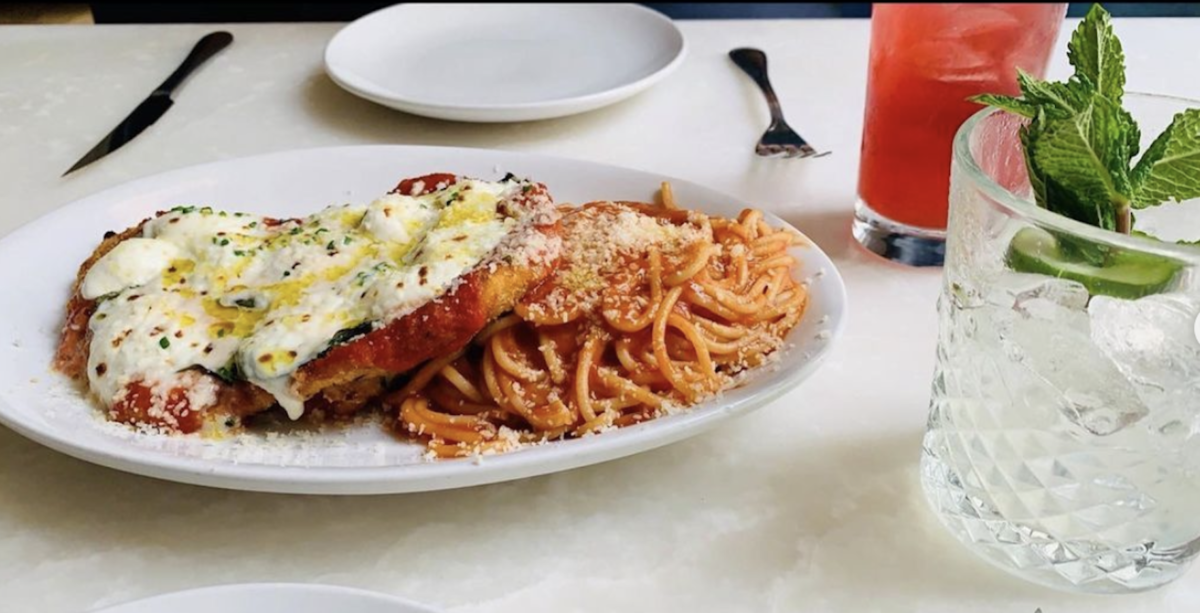Building on a centuries-old tradition of blending Italian classics and authentic recipes with fresh local ingredients, Charleston’s Italian restaurants offer all the staple pasta dishes and so much more. Downtown, there’s Indaco and Melfi’s on Upper King, and Vincent Chicco’s and Le Farfelle in the historic district. Off the peninsula, diners have Al di La, Fabio’s and La Fontana for a casual, family style Italian in West Ashley, the Wild Olive on Johns Island, Bacco for Italian-Southern fusion in Mount Pleasant, and Fratello’s Italian Tavern in North Charleston.
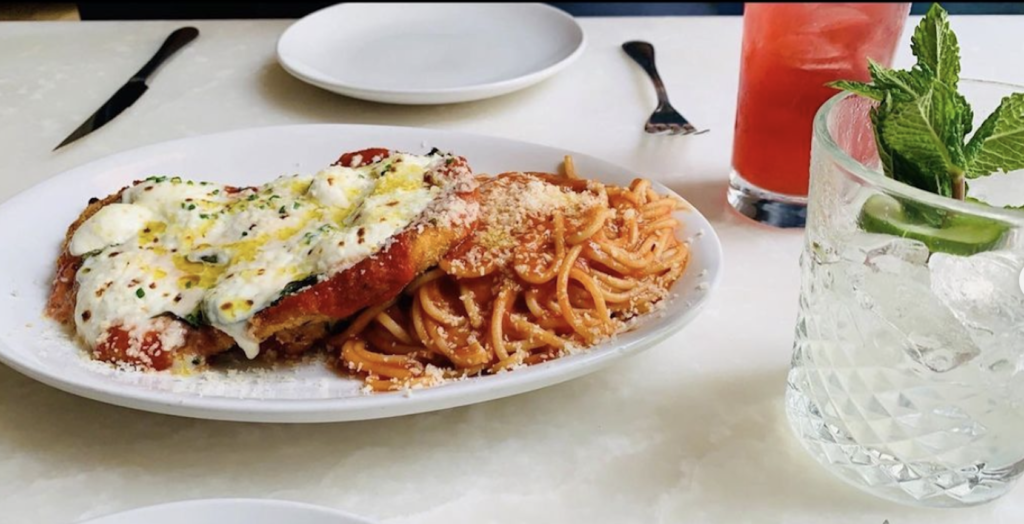
Italian Culinary Heritage
Charleston’s early Italian immigrants were small in number but left a large cultural footprint, importing wines, olive oil and cheese for their new Lowcountry neighbors, and opening grocery shops and restaurants. Jacob Genini, for example, advertised in 1838 that his Market Street shop would sell bologna, sausages, Italian cheese, fresh macaroni, and vermicelli. Charles Mauro opened the Globe Italian Restaurant in 1906, one of the first to include Italian in the name. His specialty was “imported goods such as olive oil and spaghetti and other delicacies from sunny Italy.”
By the 1920s, more Italian immigrants had arrived in the South Carolina, and several opened Italian restaurants in town. The recently published book Italians in the Lowcountry notes, “La Brasca’s Italian restaurant and pizzeria, operating at the corner of King and Cleveland Streets in the mid twentieth century, served the northern neighborhoods of Charleston. Interestingly, they also served Chinese food, but were best known for their authentic red sauce. The building is no longer extant, and a parking lot is in its place today.”

Momentum and interest in Italian cuisine grew, and in 1979, “Charleston’s Italians held a Columbus Day festival, which seems to have been a short-lived cultural event, but one that sought to bring Italian culture and fare to the city’s residents, nonetheless. The News and Courier reported in October: “Italians in Charleston are paying homage in a big way to their forbear, Christopher Columbus. To honor his memory, Sunday’s festival will feature exotic Italian foods, tarantella dancing and authentic Italian music. Throughout the day, Italian American club members will be busy cooking and selling such tempting treats as Italian sausage, meatballs and fried peppers, accompanied by pastries, confections, and espresso. Tickets may be purchased in advance at Dino’s downtown and Tom Portaro’s on Rivers Avenue.”
Some of the pioneering recent Italian restaurants, which have sadly closed over the years, included La Pasta (1980-1994) operated by Lucia Pecetti and her husband Nik Zuccalà from Milan; il Cortile del Re (1997-2015), a romantic affair with a lovely courtyard; and Pane e Vino (2008-2020), founded by Alfredo Temelini from Bergamo. Italian restaurateurs often combined recipes from the mother country with locally available ingredients, a tradition of fusion that still exists in many Charleston Italian restaurants today, some of which offer “authentic Italian” delicacies, while others specialize in Italian American cuisine.
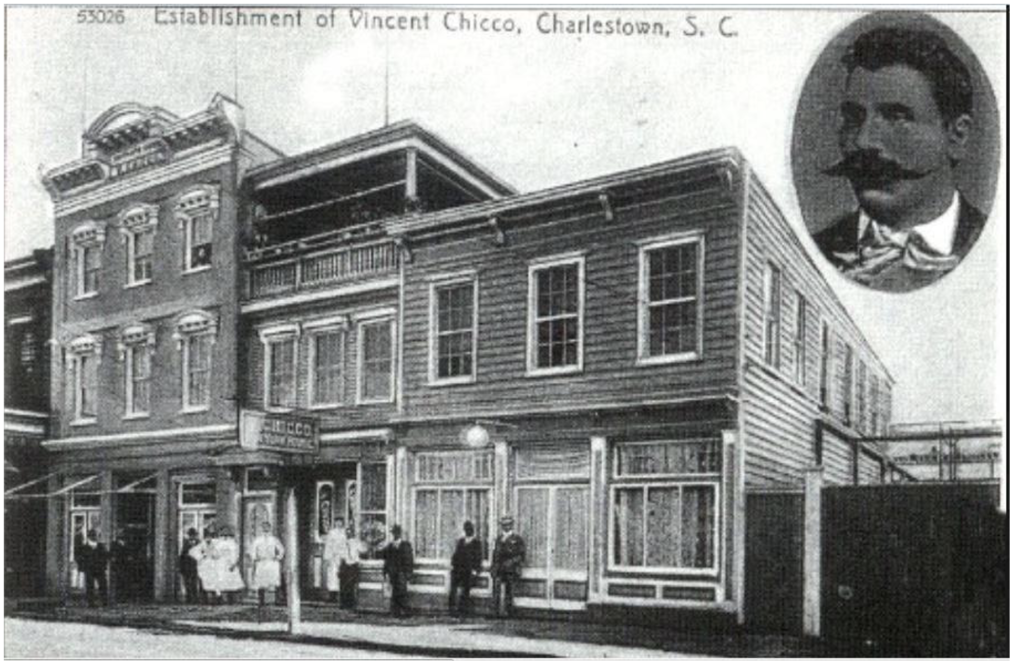
Today’s Italian Restaurants
Vincent Chicco’s, located on a romantic foot path off Hutson Street in a historic warehouse building, is named for one of Charleston’s most famous (or infamous) Italian citizens. Chicco was a well-known “blind tiger” operator during statewide prohibition, selling illegal alcohol at his saloons (guests paid to see the fictional tiger perform and were given a ‘free’ drink). In the 1920s, chicco sold olives and olive oil, pastas and cheeses, and other imported Italian, Greek, and Spanish specialties at his Market Street establishment, and eventually became a City Councilman and real estate investor.

Chicco’s Restaurant of the present is known for its ambiance as much as for its delicious, authentic food. The menu includes bruschetta, cheese plates, clams with six preparations including pesto, aioli, or scampi; gnocchi with pesto, walnut, and parmesan; cacio e pepe (egg yolk fettuccini with pepper and parmesan); and eggplant or chicken parmesan and chicken picatta. They offer unique weekly specials and a sought-after custom menu for Charleston Restaurant Week each year.
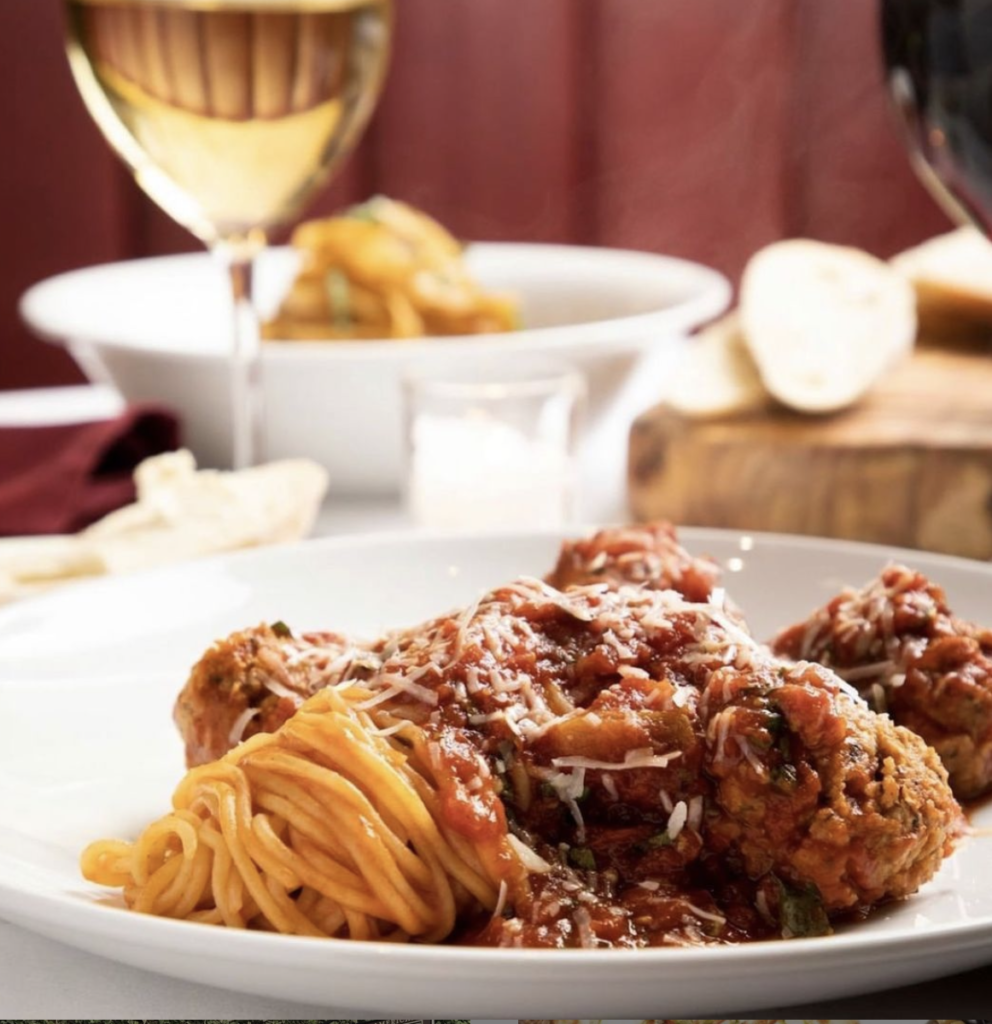
Le Farfelle, created by Michael and Caitlin Toscano, is tucked away on Beaufain Street in quiet Harleston Village neighborhood and has lovely courtyard seating as well as a cozy indoor dining room.

Their menu is robust and authentic: Polpette alla siciliana (Sicilian meatballs), salads, ceci in umido (an Italian hummus-like dish) for starters; pastas such as bucatini, clam linguini, rigatoni verde with ragu bolognese, or squid ink spaghetti with shrimp; and hearty meat options like chicken parmesan, veal, and steak. “Also boasting a well-rounded wine, beer, and craft cocktail program, Le Farfelle makes a perfect stop to grab a quick handmade pasta [to go] or a destination to celebrate any special occasion.”

Indaco (Italian for ‘indigo’) is located on upper King Street and is known for its extensive Italian wine list, its vibrant and convivial atmosphere, and for rustic Italian cuisine. Their website states, “Wood-fired pizzas, hand-crafted pastas, house made salami and cured sausages fill the restaurant’s menu which can be enjoyed family-style or a la carte. With community tables, an open kitchen, and a comfortable atmosphere, Indaco can accommodate 100 guests for a casual night of food and drinks. The wine list is focused on affordable Italian varietals, the Negroni cocktail is on tap, and the fresh sodas are made in-house.” They utilize local ingredients and add a Lowcountry flare: lots of antipasti options, mezzaluna pasta (mushrooms, blue crab, lemon, pine nuts, pecorino), eggplant ravioli, and manicotti with lamb ragu.
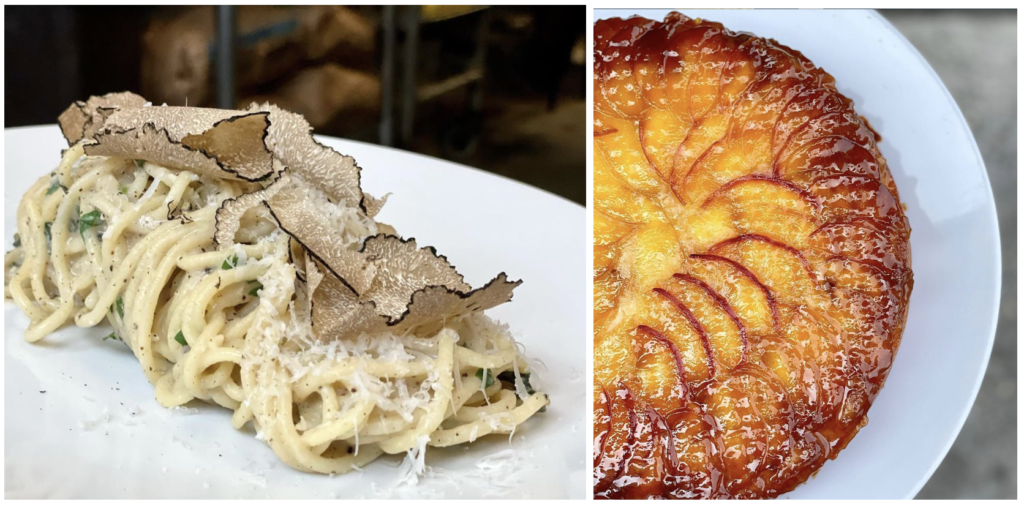
Further up King Street in the burgeoning northern restaurant district is Melfi’s, located in a historic brick corner store, with large plate glass windows for watching passersby while enjoying a tasty meal. Their specialties are honey and ricotta or warm blue crab bruschetta to start, filling traditional pasta dishes, pizzas, and osso bucco, all beautifully accompanied by Italian cocktails and spritzes. They describe themselves as “a grown-up, clubby, classic Italian restaurant with larger plates and Roman-ish thin crust pizzas. We have a long wooden bar where guests can watch the action surrounding our two wood burning ovens. The sophisticated surroundings are perfect for an intimate dinner for two.”

In Park Circle, Fratello’s Tavern (Italian for brother, indicting the welcoming, familial atmosphere) offers lunch and dinner prepared by executive chef Kevin Brunz in partnership with the Tuorto family. Specialties including cavatelli with sweet sausage and roasted red peppers and a shrimp a la romano pomodoro over angel hair pasta.
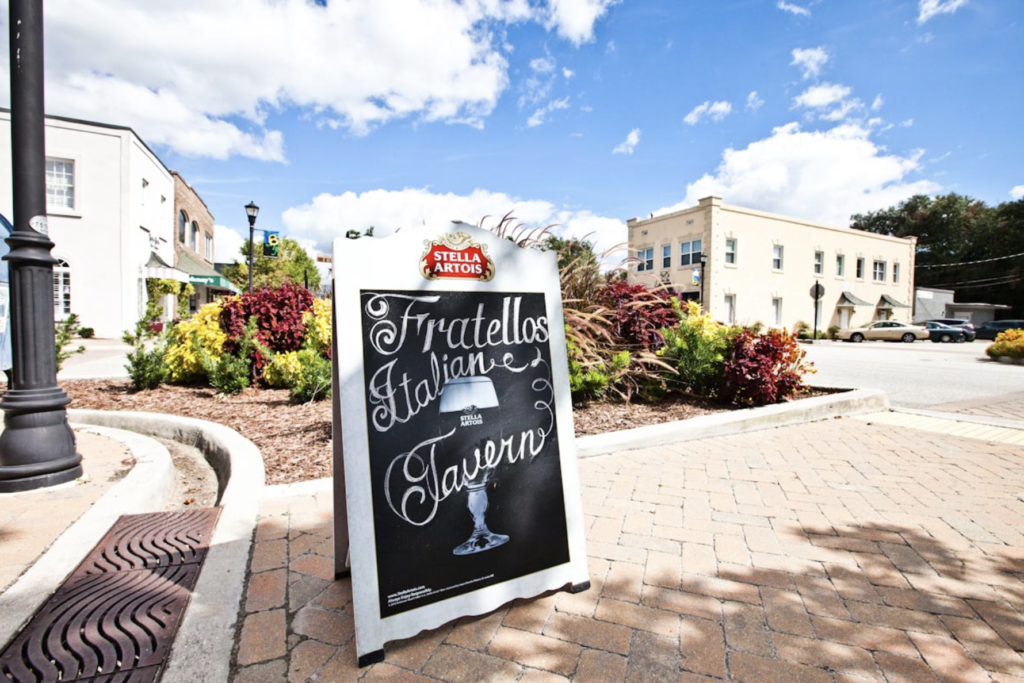
Fabio’s and La Fontana restaurants in West Ashley both bring affordable, delicious, family style Italian to the table. Al di La (on Magnolia Road) brings a diverse menu; their website lists “pasta- pizza- steak- seafood- dessert” as the specialties. Traditional meatballs, pan seared local fish, and olive oil cake speak to the blend of Italian and Lowcountry in their dishes.

Bacco (in Mount Pleasant off Houston-Northcutt Road) opened in 2007 and has become a popular mainstay. Chef and owner Michael Scognamiglio is proud of his Italian heritage and enjoys preparing regional dishes hailing from Sardinia, Calabria, and Veneto. Bacco is open for lunch and dinner, offering olive and insalata starters; pasta including pappardelle and mushroom pasta in a gorgonzola cheese sauce, entrees like grilled sausage with stewed peppers and mozzarella over polenta.
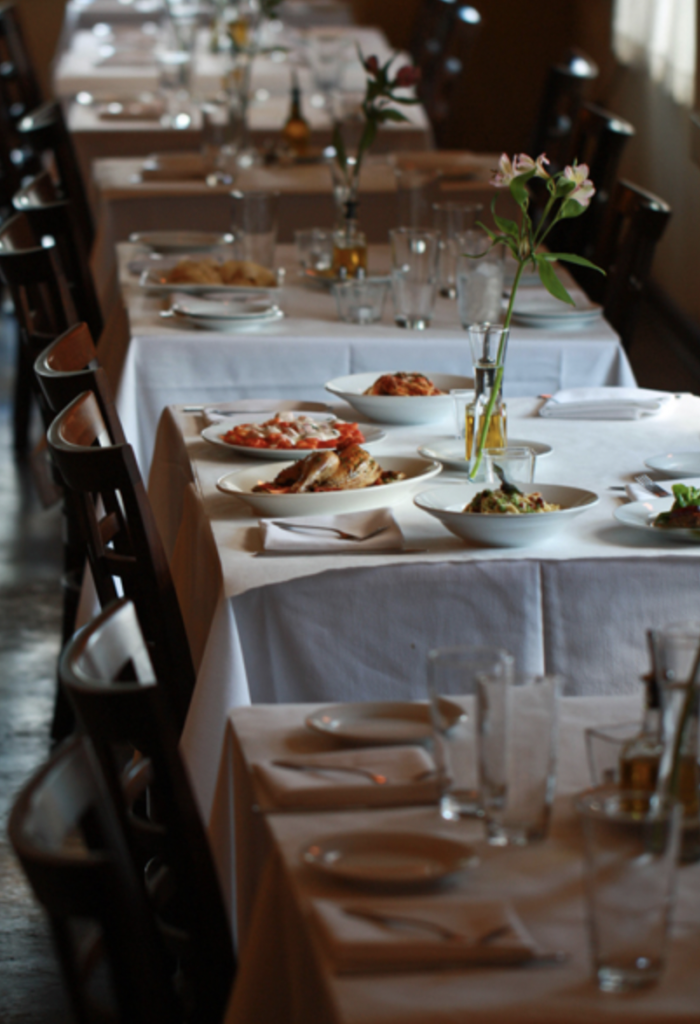
The Wild Olive melds Italian, French, and Johns Island traditions to create a unique fusion menu. Chef Jacques Larson and Fred Neuville work to source as many fresh, local ingredients as possible, and the restaurant has become a local favorite since opening in 2009. Starters include warm olives or charred octopus, with entrees ranging from traditional (lasagna and ravioli) to local shrimp served with a grit cake. Pastry chef Lindsay Cooke creates almond cakes with gelato and strawberry shortcake with balsamic glaze.
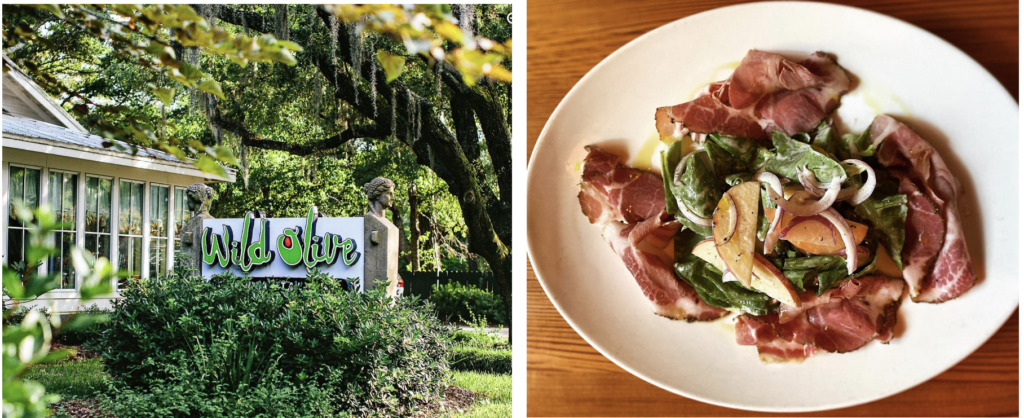
Sources:
- Christina Rae Butler for the Italians in the Lowcountry: Sunny Italy’s Charleston Colony. Charleston: Dante Alighieri Society, 2021.
- Parker Milner. “Top Seven Italian Restaurants.” Charleston City Paper. March 2021. https://www.charlestoncitypaper.com/story/top-7-italian-restaurants-in-charleston
- https://eatatmelfis.com
- Historic Charleston City Directories
- http://fratellostavern.com/gallery/
- Janice Therese Mancuso. “A Brief History of Italian Food in America.” La Gazetta Italiana. November 2010. https://www.lagazzettaitaliana.com/food-and-wine/7627-a-brief-history-of-italian-food-in-america
- John F. Mariani. How Italian Food Conquered the World. Martin’s Publishing Group, 2011.
- Charleston Courier, CC 18 January 1838
- http://www.baccocharleston.com/gallery
- https://www.holycityhospitality.com/vincent-chiccos/
- https://www.indacorestaurant.com
- Patricia Agnew. “Wild Oliver.” Charleston Magazine. June 2010. https://charlestonmag.com/features/wild_olive
- https://aldilarestaurant.com
- http://lefarfallecharleston.com
- Charleston Evening Post, 17 July 1906

